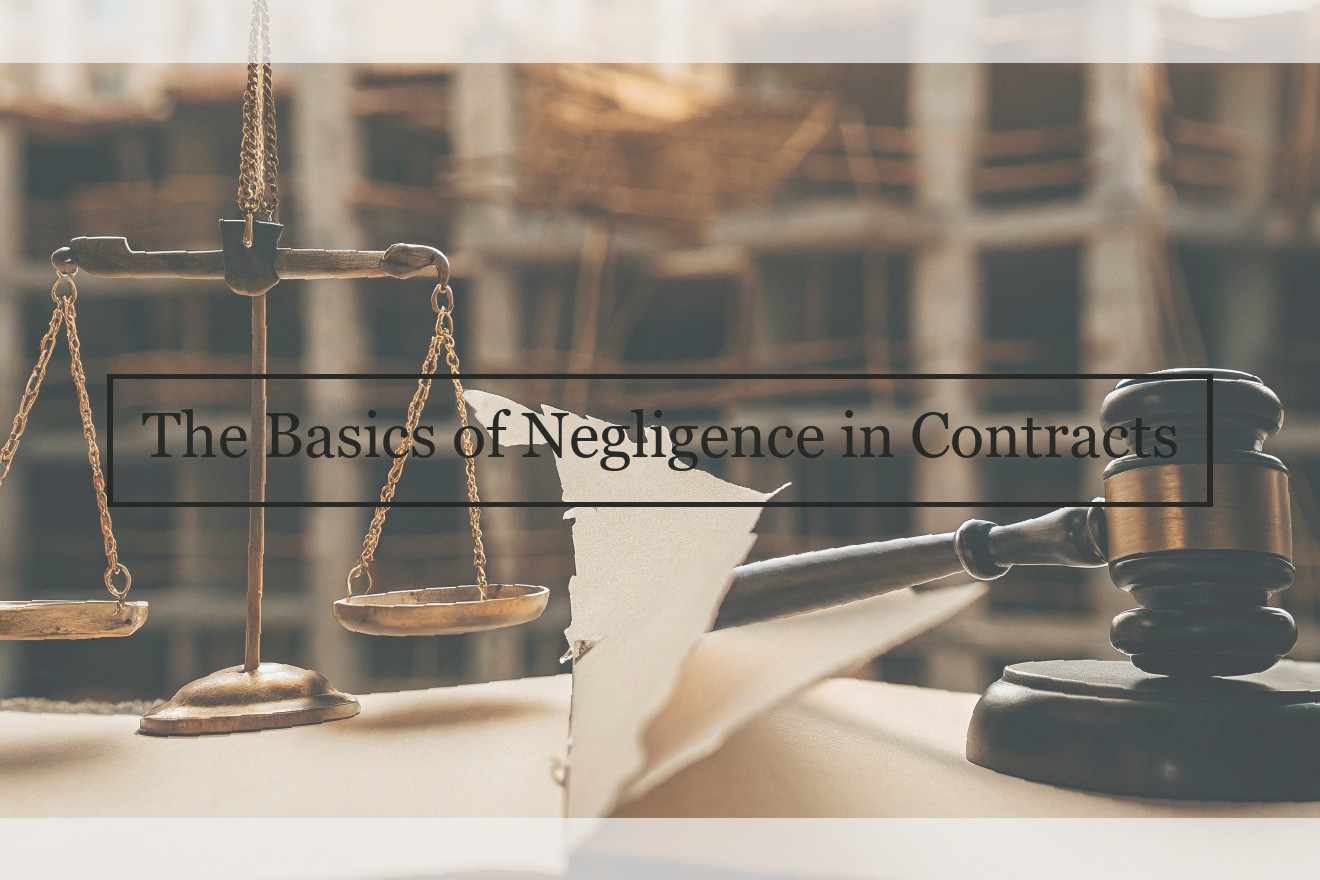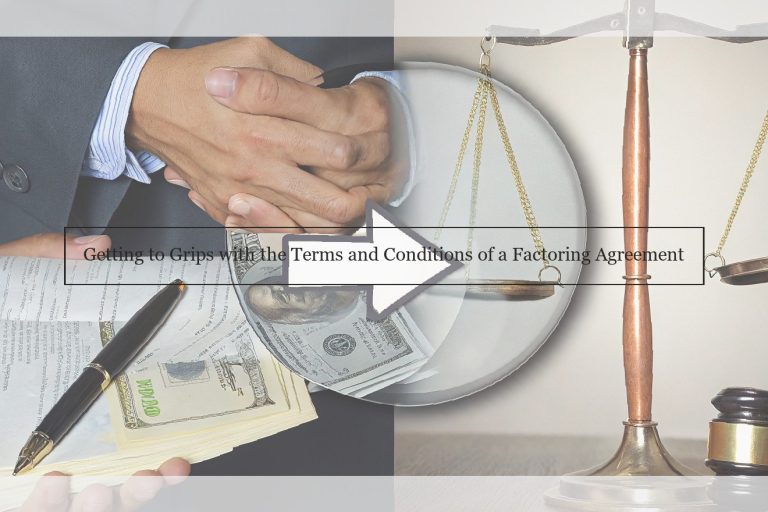What is Negligence in Contract?
A third claim not often considered when parties have a dispute with one another on the commercial relationship they have entered into is a claim for negligence. "How could I be negligent? I have a contract which says exactly what you need to do and what I need to do – how can either of us be negligent if we breach the contract? You cannot have the contract and have a negligence claim as well" is the usual reaction when negligence is raised.
Well, not so quick. The law of negligence is interesting because it focuses on whether there was a breach of a duty of care which caused damage. A breach of a duty of care is examined based on two questions – were the losses which were suffered by the parties the sort of loss the parties were seeking to avoid, and has the party with the cause of action (the person making the claim) suffered the sort of loss that can be compensated.
So why does a negligence claim fit with a failure to do something which you have contracted to do? Well, partly simply because the law allows it, and partly because you need to examine whether in dealing with your contractual obligations you did anything which caused damage to another party, or did not do that damaged another party . If you can show that you did not, then you have a claim for negligence. It is not intended to relitigate the breach of contract claim but look at whether you made a mistake in how you went about doing things when fulfilling your obligations under the contract.
A good example is the failure to complete construction of a residential building as completed and without defects. You may have a contractual claim explaining what went wrong with the property and how it was completed. It may say you need to do this or that, and you may have details of the problems with the building in accordance with the contract. If you cannot get any satisfaction, then a negligence claim may be the next step. Here the Courts will examine whether the builder failed to comply with the industry standard which caused the damage. An example could be whether the builder failed to check building regulations and codes for compliance and how that might have added risks to the property once it has been completed. If that is the case, then you may have a damages claim for the breach of that duty which can be on top of the breach of contract claim.
This is one claim that takes another look at the commercial relationship between the parties to sort out the problems which have arisen.

The Elements of Negligence in Contract
In order to establish a claim for negligence, certain key elements must be met. The defendant must have owed the plaintiff a duty of care, have breached that duty through their actions or inactions, and that breach must have directly caused harm resulting in damages. Altogether, these components determine whether a party’s negligent actions have resulted in a legally actionable liability for damages.
The Duty of Care
A fundamental principle of negligence is that a person must take reasonable care not to cause foreseeable harm. When a person has a duty towards others, a breach can result in significant liability. Generally, the duty of care is based on what the "reasonable" person would have done in a similar situation. However, depending on state statutes, state regulations, or by professional standard, a specific duty of care is required from a person who holds himself out as possessing expertise beyond that of the average citizen. This level of care, known as "professional duty of care," requires the professional to act as a reasonably competent provider would, within the community they serve. This is the applicable standard by which a plaintiff will determine if a defendant has breached their duty of care.
Breach of Duty
Breach of duty arises when the defendant fails to act as a reasonably prudent person would in the same situation. Because it is often subjective, determining whether a breach of duty has occurred is left to the court. If the court finds that the defendant’s actions were at fault, meaning that they fell below the standard of care, a breach occurred. However, if the defendant’s actions were considered reasonable, there was no breach.
Causation
Even with a negligent act or omission, courts are unlikely to impose liability if the plaintiff cannot show that the defendant’s breach of duty was both the direct and proximate cause of the damages. Causation requirements are determined by the "but-for" and "proximate cause" tests.
"Proximate Cause" is the primary limitation of the causation test. The proximate cause limits the scope of liability to consequences. Only those consequences that are reasonably foreseeable and directly related to the cause are actionable under negligence. For example, if a plaintiff slipped and fell because a defendant pushed him but the plaintiff is also found to have been wearing inappropriate footwear for the specific environment, the defendant’s action of pushing the plaintiff was not the proximate cause of the injury.
Damages
If a duty of care is established and the plaintiff proves that the defendant breached that duty to act as a reasonable person would, with that breach being the direct cause of the damages, the plaintiff will be entitled to a legal remedy. The damages recoverable in negligence cases is most commonly compensatory damages, specifically monetary damages. However, where the defendant acted with gross negligence, punitive damages may also be awarded.
Negligence versus Breach of Contract
To an extent, negligence and breach of contract claims overlap. The business that supplies a defective product or service to the customer is likely in breach of contract and also liable for negligence. In that sense, a plaintiff can almost always allege both claims against the defendant. But there are differences between these claims that the plaintiff should understand.
A breach of contract claim stems from an agreement between the parties: "The elements of a breach of contract cause of action are: (1) the existence of a contract; (2) plaintiff’s performance or excuse for nonperformance; (3) defendant’s breach; and (4) damage to plaintiff." CDF Firefighters v. Maldonado, 158 Cal.App.4th 1226, 1239 (2008). A negligence claim, by contrast, is a cause of action based in tort: "To prevail on a negligence claim, a plaintiff must prove the following elements: (1) defendant had a legal duty to use due care; (2) defendant breached that duty; and (3) the breach was the proximate or legal cause of the ensuing injury." Merrill v. Navegar, Inc., 26 Cal.4th 365, 375 (2001). These claims, as their respective names indicate, seek different damages. An injured customer may recover for all of its economic losses from a defendants’ negligent supply of a defective product or service—whether it be a direct contracting party or a non-contracting party—a plaintiff may recover for all the economic damages the breach caused. However, a contractual plaintiff may not recover for all its economic losses. "The measure of damages for a breach of contract is the amount of damages which will compensate the aggrieved party for all the detriment caused thereby, or which, in the ordinary course of things, would be likely to result therefrom . . . ." Cal. Civ. Code § 3300.
Consequences of Negligence in a Contract
The impact of negligence in meeting the obligations under a contract can be significant. In certain circumstances, negligence can result in a party losing contractual protections created for their benefit. As negligence is a tort, a claim for negligence will normally be time barred before the equivalent claim for breach of contract. It is therefore prudent for contracting parties to include contractual protection for any negligently caused loss, particularly where time does not limit the ability to make a claim for breach of contract.
In the UK case of Swain and another v Westson Holdings Ltd, two Nissan garage owners had taken out a "Moto Image" advertising campaign through a company called Yorkshire Financial. The premises of the policyholder garages were to be promoted with prominent and exclusive advertising covering the whole of four sides of the forecourt hoarding.
The surveyor engaged to carry out the work failed to appreciate that the garages would be of three storey construction. The policy through Yorkshire Financial required a seven inch wide fascia board to be added all round the newly constructed roof to screen the hoarding boards to be fitted by the surveyor.
As a result of the negligent failure to appreciate the height of the garages, the bulk of the hoarding was exposed which made the advertising unclear and difficult to read. The fascia board was not added and was not wide enough to obscure the hoarding boards. The advertising on the hoarding boards was positioned too low down the wall so that much of it was obscured from view.
The policyholders claimed that they had lost business as a consequence of the service provided by Yorkshire Financial. The High Court found that the effect of the adverse publicity, lost business and consequent unemployment should, as far as possible, be compensated and held that the damages should cover all heads of damage that had been pleaded.
Defenses to Negligence in Contract
In the realm of contract law, a defendant may assert defenses against a claim of negligence against them. One common defense is called contributory negligence. This occurs when both the defendant and the plaintiff are found to have contributed to the negligence in question. For example, if the plaintiff has failed to meet the standard of care required by section 552B and also failed to cover their losses from their own negligent actions. If this is the case, the defendant would then argue that the plaintiff should receive nothing because they too had acted poorly, which led to the damages.
Assumption of risk is most frequently used by contractors and construction professionals, however, it can apply in other situations as well. Assumption of risk occurs when the plaintiff knows that there is a significant risk, typically associated with an inherently dangerous activity, and chooses to do it anyway. If this is the case, there is usually no possible recovery from negligence against the defendant. This is because the plaintiff has forfeited their right to recover on the basis of negligence when they chose to take on the risk for themselves after being fully informed of all possible risks .
Depending on what exactly is at issue in the case at hand, statutory defenses may also be used. These types of defenses are governed by state codes and the like. Typically these defenses are used when it may be the case that the defendant cannot be held liable if there is a other course of action for the damages to be recovered or mitigated. Statutory limits, for example, are as their name implies. Some statutes will, in effect, limit the amount of damages that can be recovered in a case. In the case of negligent economic loss, for example, these limitations are relatively broad.
Another possibly applicable statutory defense is the comparative responsibility statute, which is codified under Washington state law business & profession code sections 17080.735. Under this code, if the negligence of the plaintiff and the defendant (or defendant’s insured) contributed to the damages in a given action, such that they were indivisible, then liability is apportioned based on the degree of culpable conduct each party is responsible for.
Negligence in Contract: Famous Cases
The application of negligence in contract law has been shaped and defined by numerous judicial decisions, making it an essential area of study in this field. One of the earliest important cases is Hemming v. Westminster City Council [2005] EWHC 1031 (Admin), where the court affirmed that a party can be found negligent for failing to fulfill its contractual obligations. Along similar lines, in East Ham Corporation v. Bernard Sunley & Co. Ltd. [1966] 1 W.L.R. 1093, the plaintiff claimed that the defendant had been negligent by providing them signed blank forms that the plaintiff then used to create contracts of lease. Ultimately, the court referenced the rule set by McSirrah v. O’Dwyer [1932] 2 I.R. 53, stating "in providing the blank form signed by the mayor of East Ham the council put into circulation an instrument which had on the face of it the appearance of authority and it is not upon a purporting execution by a mayor that the critical issue should turn." In Barr v. Biffa Waste Services Ltd [2012] EWCA Civ 312, the claimant argued that the defendants had been negligent in the management of their landfill site. The court held that the defendant had not been negligent, as it was not foreseeable that a person would enter the site at the time the claimant did. Another key case is Smoker v. London Fire and Civil Defence Authority [1988] 1 All E.R. 160, which held that when there is no duty to rescue a plaintiff or a third party, a defendant is not liable for failing to do so. The court also stated that a duty to rescue a person possessing an inherent danger falls under the principles of no liability. The case of Alfred McAlpine Construction Ltd v. Panatown Ltd [2001] UKHL 60 illustrates that it is possible to recover for purely economic losses in negligence, but only if the negligent breach comprises contractual obligations that would have provided for protection against the risk of loss.
Tips on Preventing Negligence in Contracts
Preventing negligence in your contractual relationships starts with proper deliberation and documentation when drafting contracts. It is unfortunate that many parties enter into contracts without careful assessment of their obligations and possible risks or damages. This can easily lead them to being negligent in carrying out the terms of the agreement or even becoming involved in a dispute over the contract.
These disputes may come from breaching the terms of the contract or failing to exercise reasonable care to fulfill the expectations of the contract’s terms. Steps such as involving a lawyer, using contract management software, and installing checks and balances into the process can minimize the risk of negligence in your contractual relationship.
Many people think that hiring a lawyer is an unnecessary expense until it’s too late. When it comes to contracts, though, hiring a lawyer to review your obligations can save you money and trouble long-term. Especially with complex contracts — like those dealing with employment, real estate, construction or intellectual property — the terms and definitions can be ambiguous or contradictory, opening up the possibility of committing an unintentional breach.
Working with the right lawyer can actually save you money. If there are conflicting terms, your lawyer can help interpret the contradicting clauses and speak on your behalf during contract disputes. This can save you the cost of recovering your losses after a breach or dispute.
Safe electronic documentation makes it easy to access your contracts at a moment’s notice . The ability to search online for keywords or phrases can make reviewing the terms of your contract quick and help you avoid negligence that could result from failing to carry out its terms. However, paper contracts can also be easily misplaced, lost or damaged. Backing up your documentation in a secure location will give you peace of mind that you can access your contracts in the event of a dispute.
Contract management software reduces the human element in contract review so you can simplify the process without the help of a lawyer, if you choose to do so. This type of software allows many users equal access to contracts, as opposed to using hard copies or emailed contracts that can easily get misplaced.
For automated workflows, contract management software allows users the ability to easily alert all parties to relevant contract deadlines. Software should also allow for re-sending contract reminders by email and sending alerts to all parties when a contract has been amended or requires signatures.
Having checks and balances in place can also help to prevent errors. Require multiple senior leaders to review contracts and have those reviews be regularly scheduled so that they become part of the business culture of compliance. This will minimize confusion and the risk of loss.
Documentation isn’t just important when it comes to contract review and maintenance. If a dispute arises, you will need to document the negotiations preceding the final agreement. Keeping accurate records of the terms of the contract and any changes that were made along the way can make defending against a negligence claim much easier.




+ There are no comments
Add yours